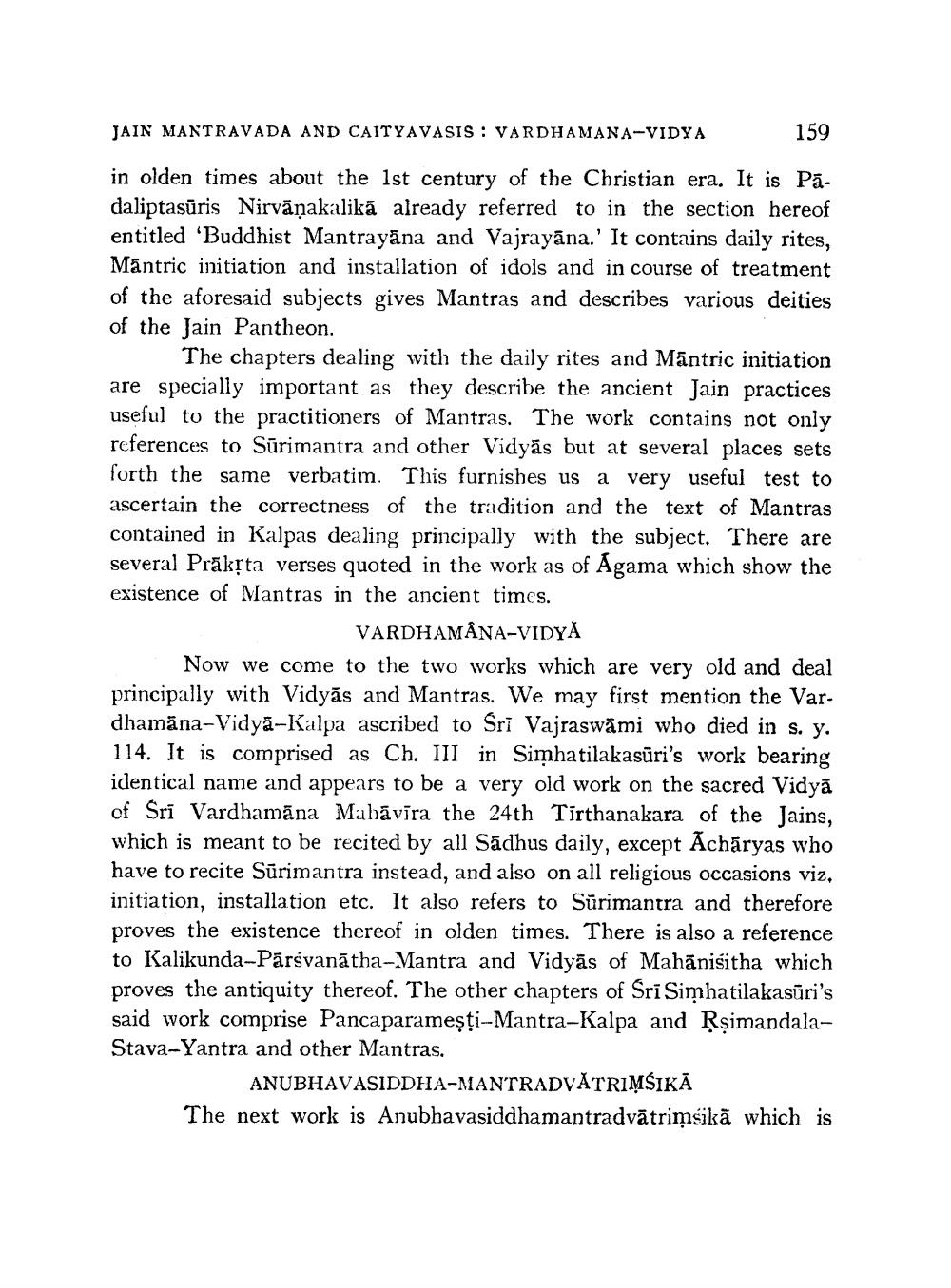________________
JAIN MANTRAVADA AND CAITYAVASIS: VARDHAMANA-VIDYA
159
in olden times about the 1st century of the Christian era. It is Padaliptasūris Nirvāṇakalikā already referred to in the section hereof entitled 'Buddhist Mantrayana and Vajrayana.' It contains daily rites, Mantric initiation and installation of idols and in course of treatment of the aforesaid subjects gives Mantras and describes various deities of the Jain Pantheon.
The chapters dealing with the daily rites and Mantric initiation are specially important as they describe the ancient Jain practices useful to the practitioners of Mantras. The work contains not only references to Sūrimantra and other Vidyas but at several places sets forth the same verbatim. This furnishes us a very useful test to ascertain the correctness of the tradition and the text of Mantras contained in Kalpas dealing principally with the subject. There are several Prākṛta verses quoted in the work as of Agama which show the existence of Mantras in the ancient times.
VARDHAMANA-VIDYA
Now we come to the two works which are very old and deal principally with Vidyas and Mantras. We may first mention the Vardhamana-Vidya-Kalpa ascribed to Sri Vajraswami who died in s. y. 114. It is comprised as Ch. III in Simhatilakasuri's work bearing identical name and appears to be a very old work on the sacred Vidya of Sri Vardhamana Mahāvīra the 24th Tirthanakara of the Jains, which is meant to be recited by all Sadhus daily, except Acharyas who have to recite Sūrimantra instead, and also on all religious occasions viz. initiation, installation etc. It also refers to Surimantra and therefore proves the existence thereof in olden times. There is also a reference to Kalikunda-Parsvanatha-Mantra and Vidyas of Mahānisitha which proves the antiquity thereof. The other chapters of Sri Simhatilakasūri's said work comprise Pancaparameşti-Mantra-Kalpa and RṣimandalaStava-Yantra and other Mantras.
ANUBHAVASIDDHA-MANTRADVÅTRIMŠIKĀ
The next work is Anubhavasiddhamantradvātrimsika which is




